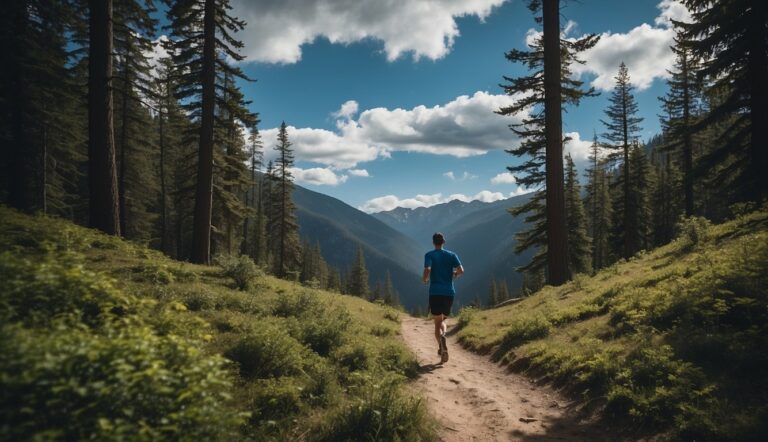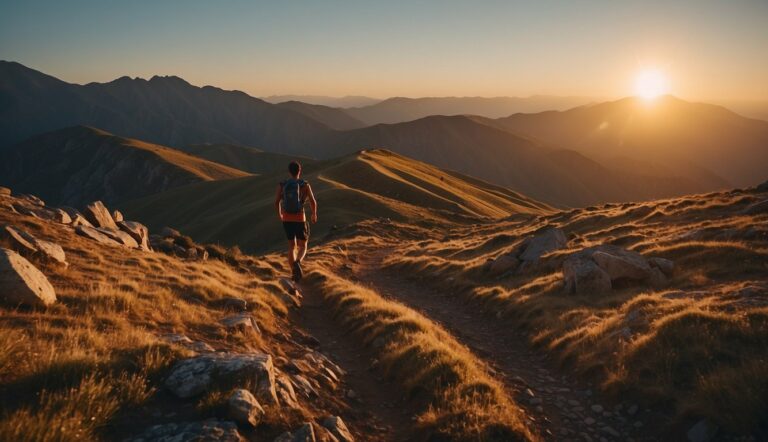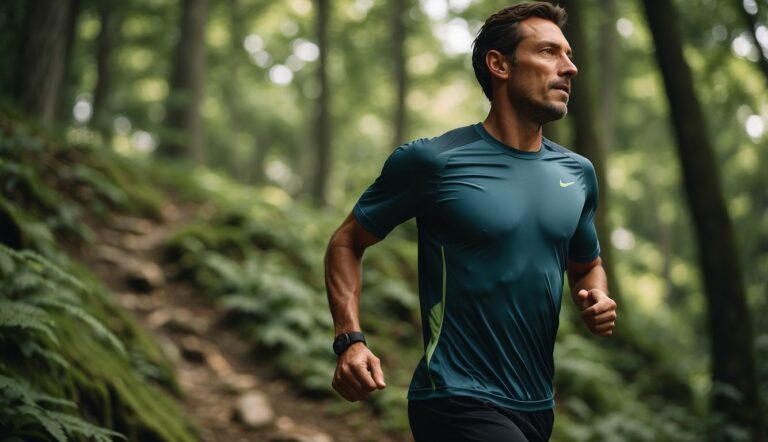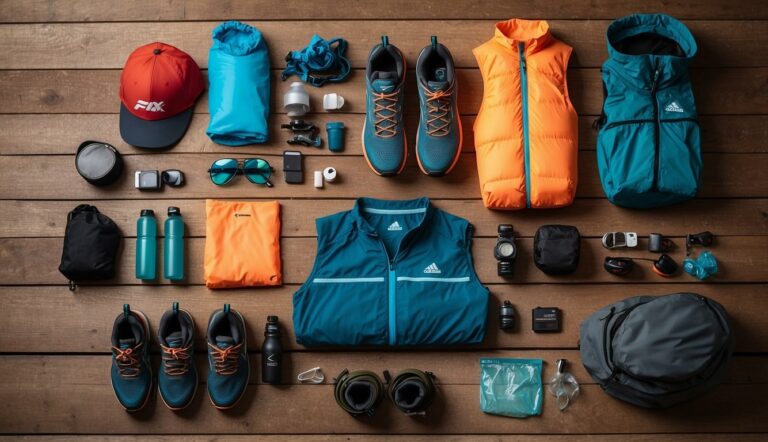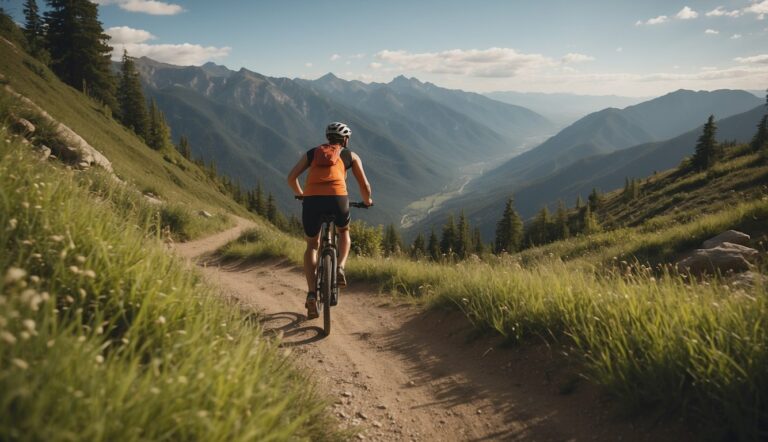Trail Running and Leave No Trace Principles: Upholding Nature’s Balance
As a UESCA certified running coach with extensive experience in trail running, I understand the importance of preserving the natural beauty and integrity of the outdoors. When we lace up our running shoes and hit the trails, it’s not just about the physical challenge or the personal achievement; it’s also about respecting our environment. That’s where the Leave No Trace principles come into play. These guidelines, developed by the Leave No Trace Center for Outdoor Ethics, are essential for minimizing our impact on the environment and ensuring that the trails we love remain pristine for future generations of runners.
The Leave No Trace principles offer a framework for making better decisions in the outdoors. They encourage planning ahead and preparing for outings, disposing of waste properly, leaving what we find, and minimizing campfire impacts, among other important practices. As trail runners, it’s our responsibility to understand and implement these principles during our runs. Whether we’re passing through local parks or exploring remote wilderness areas, our actions can make a significant difference. Balancing our passion for running with a commitment to the Leave No Trace principles allows us to enjoy the outdoors sustainably and responsibly.
Embracing these principles isn’t just about following rules; it’s about adopting an ethic that enhances our connection with nature and with the running community. We set an example not just for fellow trail runners but also for everyone who enjoys outdoor recreation. By incorporating Leave No Trace into our training and runs, we help protect the trails and natural spaces that challenge and inspire us, ensuring they remain vibrant and accessible now and in the future.
Understanding Leave No Trace Principles

The Leave No Trace principles are the gold standard for outdoor ethics which aim to minimize our impact on the natural environment. As a UESCA certified running coach who frequents trails, I emphasize these principles to runners for protection of the outdoors and respect for wildlife.
Ethics and Impact Awareness
I teach that recognizing our impacts is the first step in preserving the land. When trail running, we must understand that our presence affects the environment, and it’s our responsibility to minimize this.
- Respect Wildlife: Do not disturb animals or their habitats. Maintain a safe distance and avoid feeding wildlife.
- Protect Vegetation: Stay on designated trails to avoid trampling plants and causing soil erosion.
- Social Considerations: Be considerate of other visitors. Control noise and yield to other trail users as needed.
By internalizing these ethics, we can ensure that our outdoor activities are sustainable.
Research and Education Programs
The Leave No Trace Center for Outdoor Ethics is the primary body for research and education on these principles. They create and disseminate educational materials to foster outdoor responsibility.
- Education: Provides training on the principles for leaders and outdoor enthusiasts.
- Materials: Develops resources and guides for educating the public.
As a coach, I use these programs to stay informed and to educate my runners, ensuring that we all contribute to protecting our treasured landscapes.
Planning for Trail Running and Camping
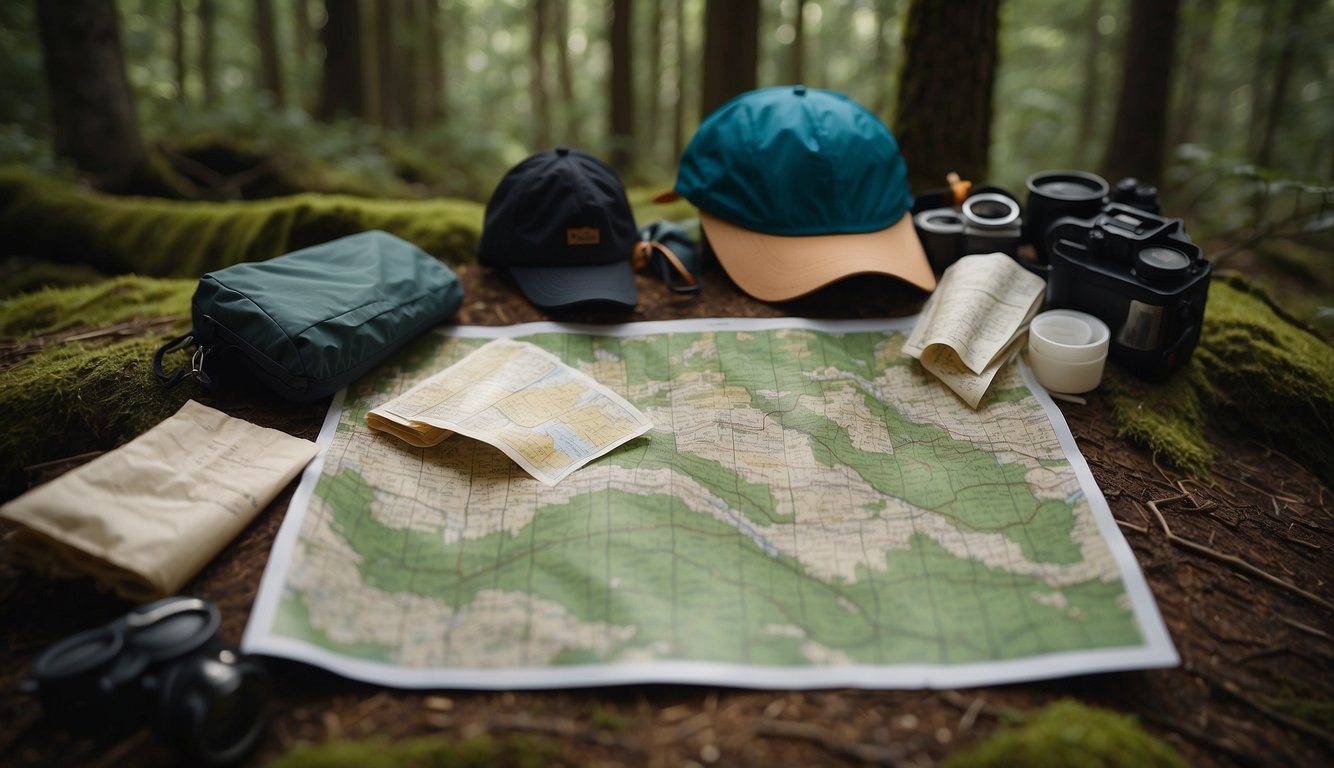
When planning your trail running and camping adventure, it’s essential to prepare for the unexpected and minimize your impact on the environment. Detailed preparation ensures a safer, more enjoyable experience and preserves the trails for future visitors.
Prepare for Variable Conditions
To ensure a safe trail running and camping experience, stay informed about the weather and expected trail conditions. Always carry a map and compass to navigate unfamiliar trails and avoid getting lost. Here’s a checklist for your planning:
- Weather forecast: Check for any extreme weather alerts.
- Emergency Plan: Know the local emergency contacts and have an evacuation plan.
- Equipment needed: Pack appropriate gear, including clothing for varying temperatures and terrain.
- Permits and regulations: Secure any necessary permits and understand the local regulations and minimum impact practices.
Minimizing Campfire Impacts
Campfires can have lasting effects on the environment. If you must have a campfire, follow these guidelines to minimize impact:
- Use Established Fire Rings: Keep fires small and manage them in established fire rings when available.
- Alternative Light Sources: Opt for candle lanterns or LED lamps instead of a fire for light.
- Leave No Trace: Ensure that all traces of your campfire are gone before you leave, which may involve dispersing cooled ashes.
By thoroughly planning ahead and preparing, I help ensure my trail running and camping activities are safe and environmentally conscious, while also setting an example for others to follow. Respect for the natural environment goes hand in hand with the enjoyment of outdoor experiences.
Trail Running and Durable Surfaces
When I hit the trails, my priority is to minimize my impact on the environment. This ensures the trails remain pristine and the natural world is preserved for future runners. It’s about knowing where and how to run responsibly.
Selecting the Right Trails
I choose trails that are designed to withstand frequent use. This means opting for paths that have a stable surface such as rock, gravel, or dry grass, especially in popular areas.
- Stable Ground: Hard-packed dirt and gravel are the most durable.
- Weather Considerations: In wet conditions, look for trails that drain well to avoid creating new paths.
- Trail Popularity: Often, the more popular the trail, the more durable it is.
Avoiding Sensitive Ecosystems
I stay clear of sensitive or pristine areas to prevent damage. This is especially important around riparian zones, which are ecosystems adjacent to rivers and streams. Here’s how I do it:
- Riparian Zones: Maintain a minimum distance of 200 feet to minimize impact.
- Off-Trail Hazards: Venturing off-trail can lead to soil erosion and disturb wildlife.
By emphasizing travel on durable surfaces during my trail runs, I protect the integrity of the trail and surrounding environments.
Leave No Trace While Camping and Hiking
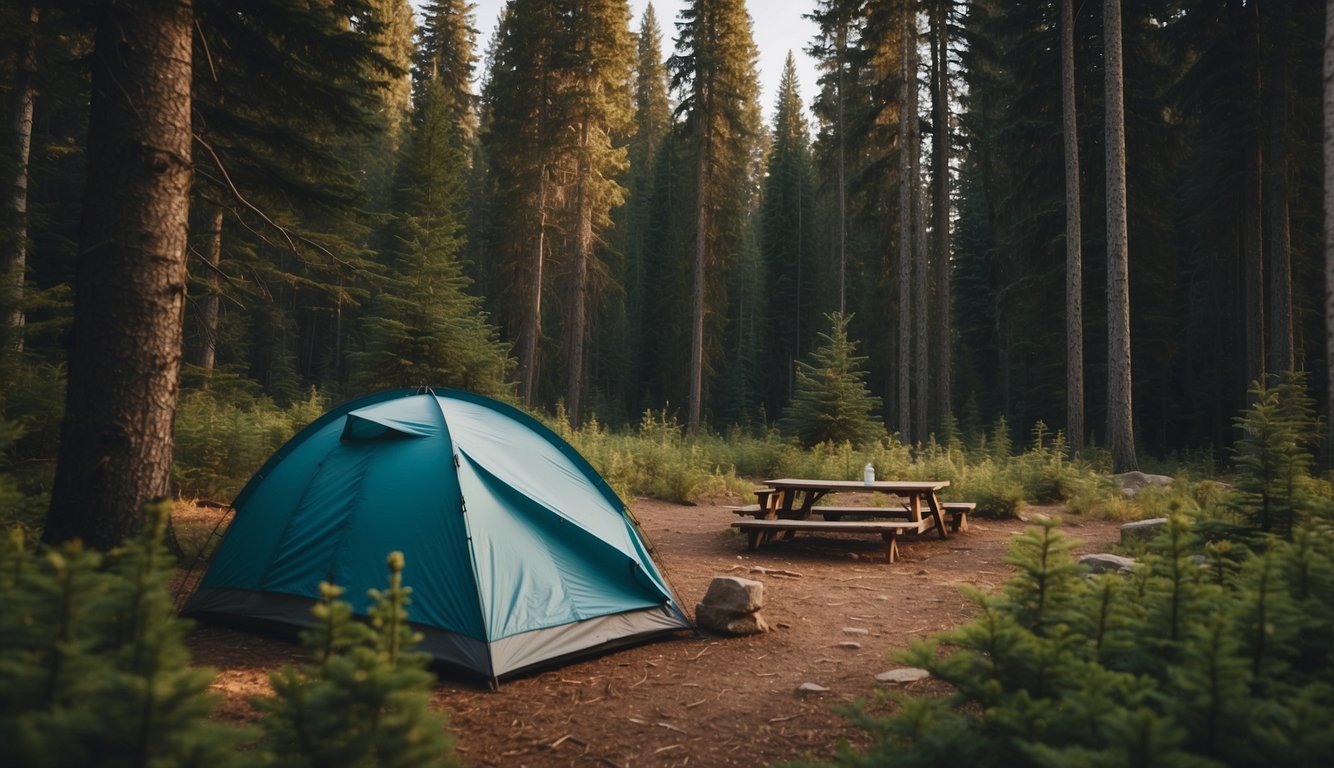
When hiking or camping, it’s crucial to adhere to Leave No Trace principles to minimize environmental impact. My guidance focuses on waste disposal and protecting nature, drawing on extensive trail running coaching experience.
Disposal of Waste
Trash and Litter:
- Always follow the “pack it in, pack it out” ethos to remove all trash and litter from the trails.
- Hygiene products: These must be carried out with you, not buried or left behind.
Human Waste:
- Use catholes for human waste disposal, located at least 200 feet away from water sources, trails, and camps.
- Dig 6 to 8 inches deep, and once used, cover and disguise the cathole.
Table: Waste Disposal Methods
| Waste Type | Method of Disposal | Notes |
|---|---|---|
| Trash | Pack out | Includes all plastic, paper, and metal waste. |
| Leftover food | Pack out | Eliminates attraction for wildlife. |
| Hygiene items | Carry out in sealed bags | Prevents contamination and unsightliness. |
| Human waste | Bury in catholes or pack out with WAG bags | Catholes should be well-camouflaged. |
Preserving Nature and Wildlife
Vegetation and Natural Objects:
- Preserve the landscape as you find it; this means not picking plants or moving rocks.
- Camp on durable surfaces to avoid damaging vegetation or contributing to erosion.
Wildlife:
- View wildlife from a distance without disturbing them or altering their natural behaviors.
- Never feed wildlife as it can disrupt their nutrition and create dependency.
Pets Control:
- Keep pets under control at all times to ensure they don’t harm wildlife or vegetation.
Table: Protecting Natural Resources
| Resource | Protection Strategy |
|---|---|
| Wildlife | Observe from a distance, do not feed or approach. |
| Vegetation | Camp on durable surfaces, do not pick or collect flora or rocks. |
| Non-native species | Clean gear between trips to prevent spread. |
| Natural Quiet | Minimize noise to preserve nature’s soundscape for yourself and others. |
By following these practices, I contribute to preserving the environment’s integrity and ensure that others can enjoy these natural spaces for years to come.
Interacting with Other Trail Visitors

While trail running, it’s paramount to be conscious of sharing the space with others. Being considerate of other visitors ensures a positive experience for everyone involved.
Managing Noise and Group Size
When in nature, it’s important to let the sounds of the environment take precedence. To manage noise, I advise:
- Avoiding loud voices and music: Personal enjoyment should not disrupt others or wildlife.
- Maintaining small groups: This minimizes noise and impact, respecting both the environment and others’ experiences.
Example:
| Group Size | Noise Level | Action Taken |
|---|---|---|
| 1-4 | Low | Speak softly |
| 5-8 | Moderate | Use headphones for music |
| 9+ | High | Divide group and stagger starts |
Group size should be kept to a minimum, as large gatherings can dominate the trail and surrounding areas.
Yielding on Trails and Sharing Spaces
Understanding when and how to yield can prevent accidents and ensure a fluid experience for all trail users.
General Yielding Guidelines:
- Hikers going uphill have the right of way.
- I yield to pack stock and horses as they are less maneuverable.
- On multi-use trails, mountain bikes yield to runners and hikers, and everyone yields to horses.
Respecting Shared Spaces:
- In areas such as backyard trails, local parks, or well-established national parks, be especially respectful.
- Stay on the trail to avoid trampling sensitive flora and fauna.
Sharing spaces goes beyond just yielding; it’s about preserving the trail experience for all.

